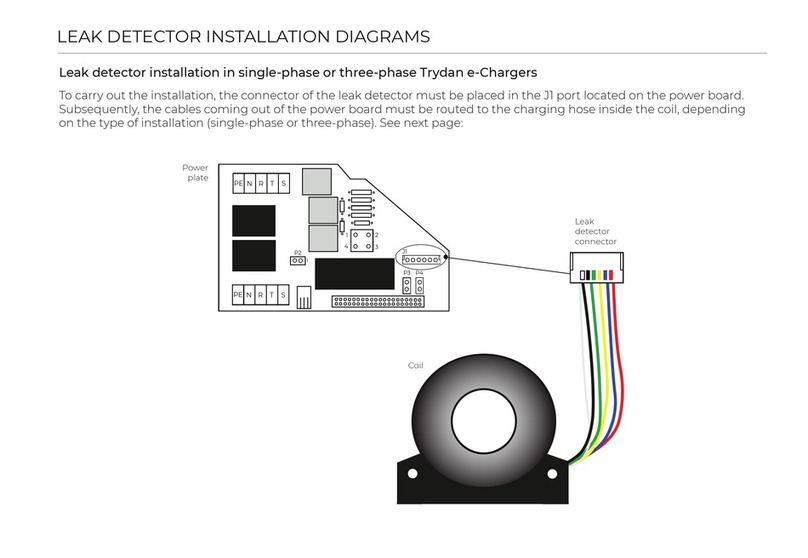
- Installation of the charging point in hazardous areas is forbidden.
- Do not mount the electric charging station in the direct path of people so that no one
can trip over the plugged-in charging cable and that no flow of pedestrians can step on
or cross the charging cable.
- Do not mount the electric charging station in a place exposed to ammonia or ammonia
gas (e.g. near to stables)
- The mounting surface must be firm enough in order to withstand mechanical load.
- Do not install the charging station in places where objects could fall and damage the
equipment (e.g. ladders or hanging hires)
- Do not subject the equipment to direct water jets (e.g. due to the proximity to car wash
stations or high-pressure cleaners).
- The device should be protected from direct rain as far as possible to prevent icing, hail
damage or similar.
- The device should be installed in a way that it is protected from direct sunlight as far as
possible to prevent reduction of the charging current or interruption of the charging due
to excessive temperatures of the charging station components.
- In case of an outdoor installation (e.g. outdoor parking) please switch off the charging
point if the temperature reaches unacceptable values.
Observe the internationally valid installation standards (e.g. IEC 60364-1 and IEC 60364-5-52)
and comply with the nationally applicable installation standards and regulations.
5.2 ELECTRICAL CONNECTION INSTRUCTIONS
Selection of differential circuit breaker:
Each charging station must be connected to a
separate differential circuit breaker. Other
current circuits cannot be connected to this
differential circuit breaker. A suitable rated
current IN must be selected for the set circuit
breaker.
Sizing of the head-end thermal
magnetic switch:
The increase of the ambient temperature
in the control cabinet must also be taken
into consideration for the sizing of the
thermal circuit breaker. Calculate the
rated current according to the chosen
charging power and the supply line.
Sizing of overvoltage devices:
If national legislation requires it, the
installation of an overvoltage device must
be designed according to the maximum
intensity of the charging station.
Determine the rated current according to
the data on the nameplate in compliance
with the selected load capacity and the
supply line.
Sizing of the power supply line:
When designing the installation, do it
according to current state regulations. If
the cable is exposed to high
temperatures take into account the
temperatures that it can suffer inside the
charging point. Select the cable of
sufficient section for the chosen
automatic switch.
Disconnection device:
The Charging Station hasn no power
switch available. The differential switch
and the magneto-thermal switch of the
power supply line operate as a mains
connection device. The Charging Point
can always be turned on and will only be
switched off if it isn't used very often.




























